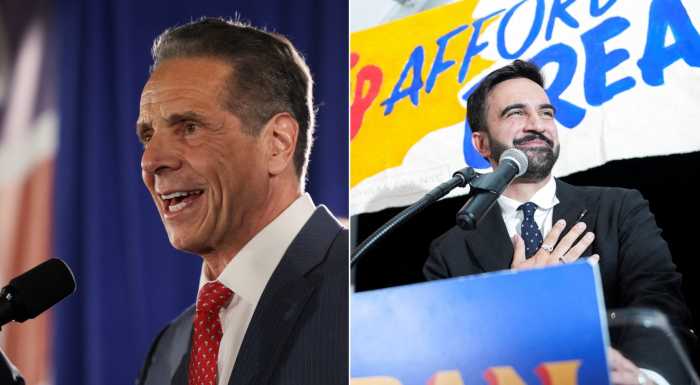Volume 17 • Issue 9 / July 23 – 29, 2004
Editorial
The report on terror
A nuclear bomb can be built with a relatively small amount of nuclear material. A trained nuclear engineer with a small amount of highly enriched uranium or plutonium about the size of a grapefruit or an orange, together with commercially available material, could fashion a nuclear device that would fit in a van like the one Ramzi Yousef parked in a garage of the World Trade Center in 1993. Such a bomb would level Lower Manhattan.
The 9/11 Commission Report,
released July 22, 2004
They’ve got our attention.
The report from the 9/11Commission, a 10-member bi-partisan panel, is a scary and serious document that requires the immediate attention of federal, state and local officials. Many, if not most of the report’s recommendations should be implemented as quickly as possible.
The members of the commission — particularly its leaders, Thomas Kean and Lee Hamilton — deserve enormous praise for coming up with sound strategies to prevent another Sept. 11-type attack – or worse. Most of the members are politicians and they were working in an election year, yet remarkably, they were able to come up with a unanimous report.
That non-partisan spirit must govern all leaders as they proceed from here. Nothing less than our lives are at stake.
Rebuilding wisely
Downtown has been hit hard by terrorism twice but it has not been diminished. To the contrary, we have been able to find within ourselves a resiliency to make sure we remember and rebuild.
As we continue to wrestle with the questions of how best to spend the last of the available federal money to help Downtown, there was a heartening development last week. Gov. George Pataki indicated for the first time a real openness not to go forward with the plan to build an $860-million vehicular tunnel under West St. and adjacent to the World Trade Center site. Up until now, the governor had continued to talk about the tunnel like it was a fait accompli.
We share the governor’s belief that a tunnel appears to be the best way to make the six-lane roadway safer, add open space and perhaps solve traffic problems near the site. The trouble is there are much higher transportation priorities and the tunnel benefits may not match the costs. If the tunnel could be built with a magic wand that would be one thing, but even if we stumbled onto another $860 million, the tunnel would have to be balanced against the other good things that could be done for Lower Manhattan.
Pataki, Mayor Bloomberg and Downtown advocates are now trying to get Congress and President Bush to agree to transfer an estimated $2.5 billion in unused tax benefits to a rail tunnel linking Downtown to the Long Island Rail Road and J.F.K. Airport. The project would also open the way to extending the E and proposed Second Ave. subway into Brooklyn. This link would provide enormous benefits to Downtown and help ensure that Al Qaeda’s attack on the Downtown economy was unsuccessful.
If West St. funds were moved to the rail project and the tax shift fight was won, it would put the $6 billion for the link well within reach. It would make it much more unlikely that the Lower Manhattan Development Corp. would have to spend its remaining $900 million on the rail link. The L.M.D.C. money ideally should be used on things like affordable housing, waterfront parks, a school and cultural centers.
Pataki told us last week that he will leave it to the L.M.D.C. to decide whether a West St. tunnel is the best option. Obviously, other agencies will also play a role, most notably the governor’s Transportation Dept., which is studying the West St. alternatives. Pataki had been the only West St. decision maker who seemed unwilling to consider not building a tunnel, and, thankfully, that no longer is true.
Read Also: https://www.amny.com/news/free-shakespeare-in-the-park/
































